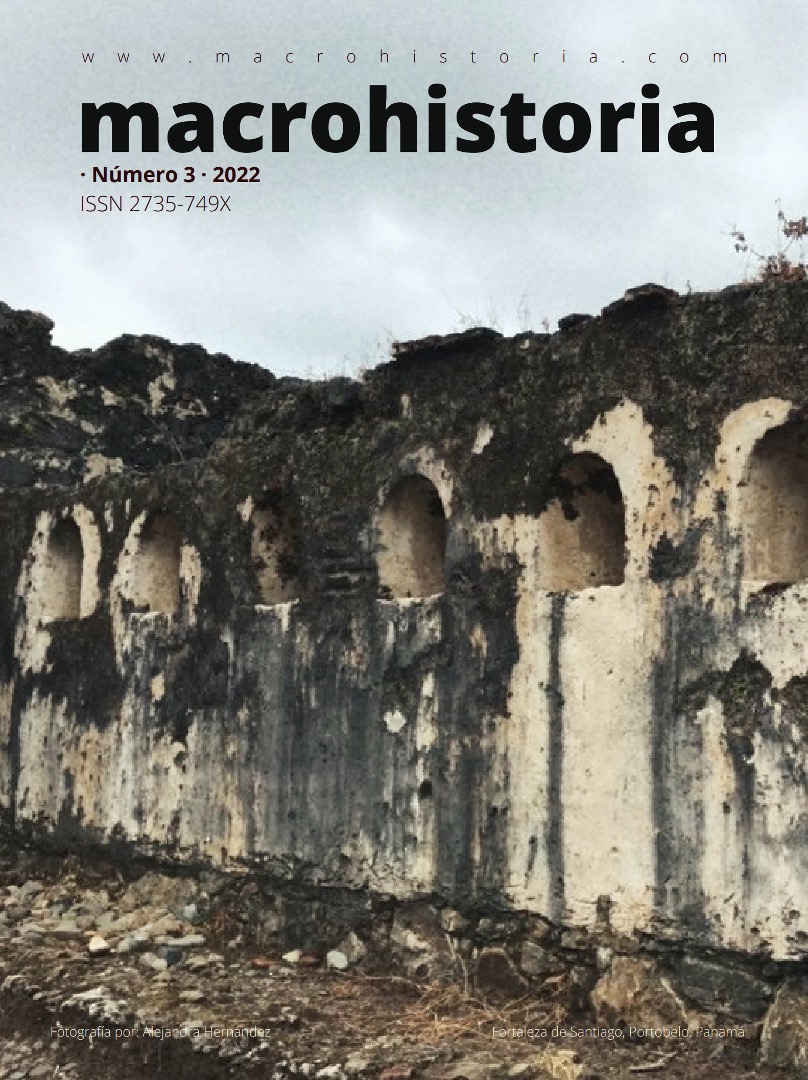Pirates, freebooters and corsairs. A historiographical analysis of maritime looting in the Atlantic and its role in the so-called early globalization in the 16th, 17th and 18th centuries
DOI:
https://doi.org/10.62120/mch.v1i3.26Keywords:
Pirates, Looting, Historiography, Early GlobalizationAbstract
The purpose of this essay is to analyze the different perspectives from which pirates and their history have been viewed, whether in relation to maritime looting, the formation of the capitalist world economy, the expansion of empires in the 16th, 17th and 18th centuries, or simply with the cultural and daily aspects that they developed in their life. It seeks to observe the existence of pirates as characters who essentially became global subjects due to the specific dynamics of their activity and the manifestations in a series of transformations that affected other subjects around the globe, mainly in the Atlantic maritime space, during early globalization.
References
Braudel, F. 1969. “Entorno a la civilización material y capitalismo”, En Las ambiciones de la historia.España:Crítica.
Bridenbaugh, C y Bridenbaugh, R. 1972.No Peace beyond the Line. The English in the Caribbean, 1624-1690.New York:Oxford University Press.
Burg, B R.1983.Sodomy and the Perception of Evil: English Sea Rovers in the Seventeenth-Century Caribbean.New York:New York University Press.
Cipolla, C. 1996.La odisea de la plata española.Barcelona:Editorial Crítica.Cruz Barney, Oscar. 1999. El combate a la piratería en Indias, 1555-1700. México, Oxford University Press.
Conrad, S, 2017, Historia Global: una nueva visión para el mundo actual, Princeton, Princeton University Press.
Esteban Deive, C. 1996. Tangomangos. Contrabandos y piratería en Santo Domingo, 1522-1606. Santo Domingo, Fundación Cultural Dominicana In.
Flynn, D O. Y Giráldez, A. 2004.“Path dependence, time lags and the birth of globalization: A critique of O’Rourke and Williamson”.en European Review of Economic History, Vol. 8.Núm 1.Oxford:Oxford University Press.Abril.
García de León, A. 2014.Vientos bucaneros: Piratas, corsarios y filibusteros en el Golfo de México. México: Ediciones ERA.
Headrick, D. 2011.El poder y el imperio: la tecnología y el imperialismo, de 1400 a la actualidad. Barcelona:Crítica.
Juárez Hernández, Y y Bobadilla González, L. 2009. Comercio, piratería y vida cotidiana en el Caribe colonial. México. Instituto de Investigaciones Históricas.
Lane, K E. 1998. Pillaging the empire: piracy in the Americas, 1500-1750.Nueva York:M E Sharpe.
Latimer, J. 2009.Buccaneers of the Caribbean: how piracy forged and empire.Boston: Harvers University Press.
Linebaugh, P y Rediker, M. 2000.The Many-Headed Hydra: Sailors, Slaves, Commoners and the Hidden History of Revolutionary Atlantic.Boston: Beacon Press.
Lucena Salmoral, M. 1992. Piratas, bucaneros, filibusteros y corsarios en América. Perros, mendigos y otros malditos del mar.Madrid: Mapfre.
Reichert, R. 2018,“Corsarios españoles en el Golfo de Honduras, 1713-1763”, en Estudios de cultura may.vol. 51.México:Universidad Nacional Autónoma de México.pri-ver.
Ritchie, R C.1986.Pirates: myths and realities.Minnesota.University of Minnesota Press.
Ruiz Islas, A. 2022. “Relatar lo cotidiano. O de cómo los asuntos del día a día se convierten en textoshistóricos”. En Historia y Grafía, año 30. Núm 59, México. Universidad Iberoamericana. Pp. 133-168.
Saiz Cidoncha, C.1985.Historia de la piratería en América española.Madrid:Editorial San Martín.
Sim, Y.H. Teddy, 2014, Piracy and Surreptitious Activities in the Malay Archipelago and Adjacent Seas, 1600-1840. 1st ed. 2014. N.p.
Von Grafenstein, J. 2000. El Caribe en los interese imperiales, 1750-1815. México. Instituto Mora.
Wallerstein, I. 1979.El moderno sistema mundial.Tomo I.México:Siglo XXI Editores.
Downloads
Published
How to Cite
Issue
Section
License

This work is licensed under a Creative Commons Attribution-NonCommercial-NoDerivatives 4.0 International License.
You are free to:
Share — copy and redistribute the material in any medium or format
The licensor cannot revoke these freedoms as long as you follow the license terms.
Under the following terms:
Attribution — You must give appropriate credit , provide a link to the license, and indicate if changes were made . You may do so in any reasonable manner, but not in any way that suggests the licensor endorses you or your use.
NonCommercial — You may not use the material for commercial purposes .
NoDerivatives — If you remix, transform, or build upon the material, you may not distribute the modified material.
No additional restrictions — You may not apply legal terms or technological measures that legally restrict others from doing anything the license permits.



